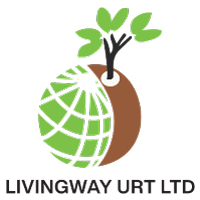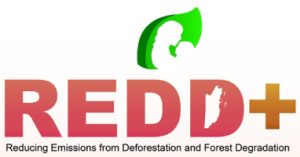Carbon Trading
Financers
From 2013 PMM Estate and REDD Carbon & Biodiversity have invested $800,000 and are currently looking to raise an additional $40 million to fund the programme
Carbon Credit: Reducing Emissions, Driving Change
Carbon credit, also known as a carbon offset, is a powerful tool in the fight against climate change. It represents a credit for greenhouse gas emissions that have been reduced or removed from the atmosphere through emission reduction projects. This credit can be sold to governments and companies across various sectors, such as manufacturing, transportation, and construction, enabling them to compensate for the emissions they generate. Essentially, carbon credits serve as permits or certificates that limit emissions to the equivalent of one ton of carbon dioxide, with the ultimate goal of reducing greenhouse gas emissions worldwide.
Market Opportunities: A World of Potential
The realm of carbon trade and markets presents vast opportunities centered around the sale of carbon credits through market-based mechanisms. There are two main types of Carbon Trading Schemes globally: Voluntary Carbon Trading (VCT) and the official Kyoto Protocol Carbon Trading.
- Voluntary Carbon Trading (VCT): Driving Corporate Responsibility VCT empowers companies to voluntarily offset their greenhouse gas emissions as part of their corporate responsibility initiatives. While participation in VCT is less rigid and not legally binding on an international level, it enables companies to take proactive steps towards reducing their environmental impact
- Kyoto Protocol Carbon Trading: Global Compliance Under the Kyoto Protocol’s Clean Development Mechanism (CDM), developed countries were obligated to reduce their greenhouse gas emissions by approximately 5% below their 1990 levels between 2008 and 2012. In the context of carbon trading, the focus is on forest carbon trading, as developing countries have the opportunity to voluntarily reduce deforestation rates and receive compensation proportional to the carbon emissions saved. This compensation is based on a baseline representing the scenario without intervention or another agreed target.
Driving Sustainable Practices: Market Forces for Change
The primary goal of carbon credits is to leverage market mechanisms to steer industrial and commercial processes towards low-emission and less carbon-intensive approaches. By imposing costs on emitting carbon dioxide and other greenhouse gases into the atmosphere, carbon credit schemes incentivize entities to actively reduce their emissions. As emissions are reduced, entities earn Certificate Emission Reductions, which can be traded, enabling other entities to meet their carbon credit limits and overcome unfavorable positions.
Embrace the Carbon Trading Revolution
Step into the exciting world of carbon trade and market opportunities, where innovation meets sustainability. Explore the potential of carbon credits to drive change, reduce emissions, and foster a greener future. Join the movement and be part of the solution as we unlock the power of carbon trade to combat climate change and shape a more sustainable world for generations to come.
Carbon Stock Estimation
The estimated carbon stock of the forest reserves in the Tabora region, based on a quantification conducted by the Global Mechanism in 2012, reveals valuable insights. On average, one hectare of bushland can yield approximately 34 tonnes of carbon for the above-ground carbon pool and about 50 tonnes for the below-ground carbon pool. Grasslands and thickets exhibit similar carbon stock values to bushland. However, woodland has a distinct carbon stock value, with 1 hectare estimated to yield up to 101 tonnes of carbon for the below-ground carbon pool and 50 tonnes for the above-ground carbon pool. This estimation forms the foundation for the expected above and below-ground carbon levels resulting from the implementation of the Carbon Credit Harvest and Purchase Programme in the region. The estimation is based on four key assumptions regarding the carbon stock values in the selected forest reserves. Additionally, Soil Organic Carbon is considered, with a study by Shelukindo et al. (2014) estimating that 1 hectare of Miombo woodland can sequester up to 12.06 tonnes in the top 5 centimeters and 40.21 tonnes up to the depth of 30 centimeters. For the purpose of this programme and its activities, the baseline data assumes 40.21 tonnes per hectare at the depth of 30 centimeters. These crucial estimations will play a significant role in the carbon trading efforts, contributing to the programme’s mission of combating climate change and promoting sustainable practices in the Tabora region.
Carbon Increment Projection



